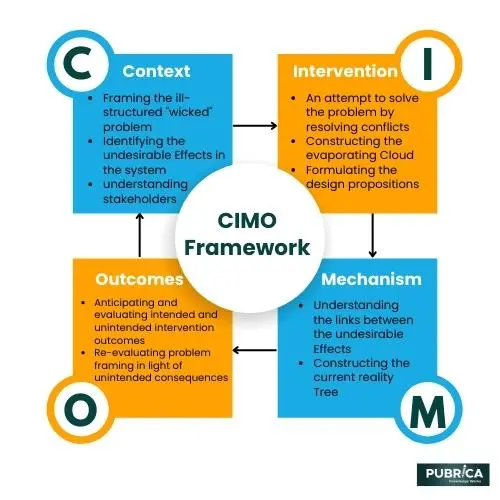CIMO Framework
The CIMO research framework is a qualitative research approach that Finnish educational researchers developed. The framework is used to understand complex social and organizational phenomena by examining the ways in which they emerge and change over time.
The acronym CIMO stands for the following elements:
Context: The social and organizational setting in which the phenomenon occurs.
Intervention: The actions are taken to address or influence the phenomenon.
Mechanism: The underlying processes or mechanisms that drive change within the phenomenon.
Outcome: The resulting changes occur due to the intervention and the underlying mechanisms.
In the CIMO framework, researchers analyze these four elements in relation to one another, examining how they interact and influence one another over time. The framework is often used in educational research, but it can also be applied to other fields.

CIMO can be used to build questions on management and policy evaluation.
| Context | Which individuals, groups, systems or relationships are you focusing on? |
| Intervention | Which event, action or activity are you investigating the effects of? |
| Mechanisms | Which responses to the intervention explain how it leads to the outcome? Which circumstances cause these responses? In which circumstances are these responses avoided? |
| Outcomes | Which effects of the intervention have you chosen to focus on? How are you defining and measuring these effects? |
Overall, the CIMO framework provides a structured way to examine complex phenomena and understand the underlying processes contributing to change.
References
Xia, Yan, Anthony Tung Shuen Ho, and YuCheng Zhang. “Cimo-component integration model.” Proceedings Seventh Asia-Pacific Software Engeering Conference. APSEC 2000. IEEE, 2000.
